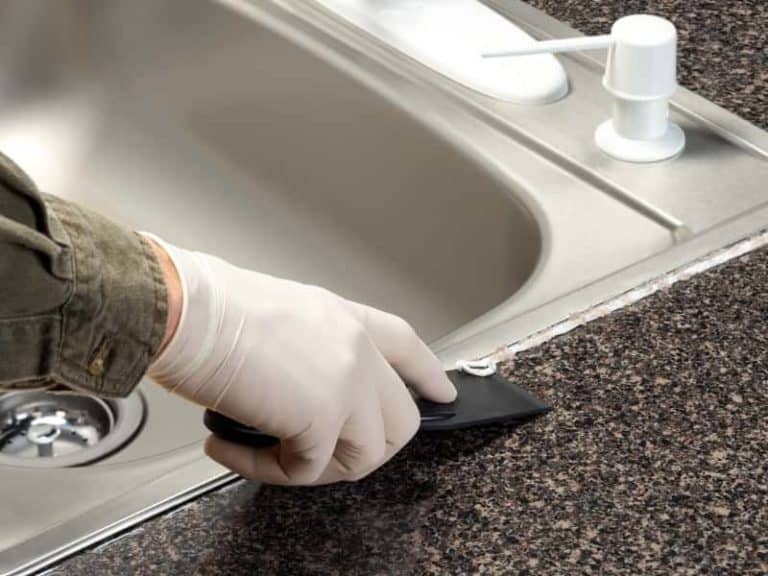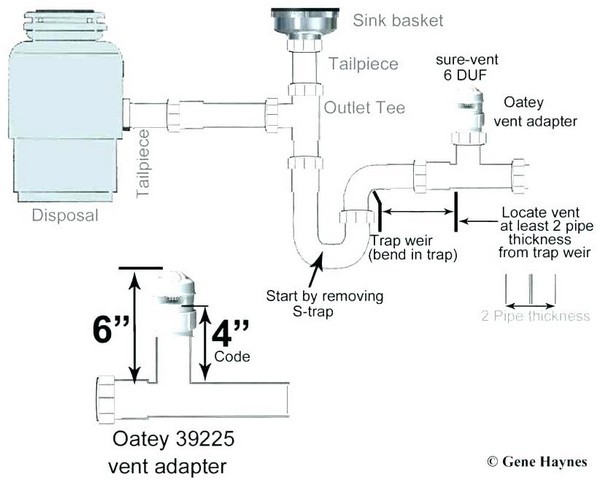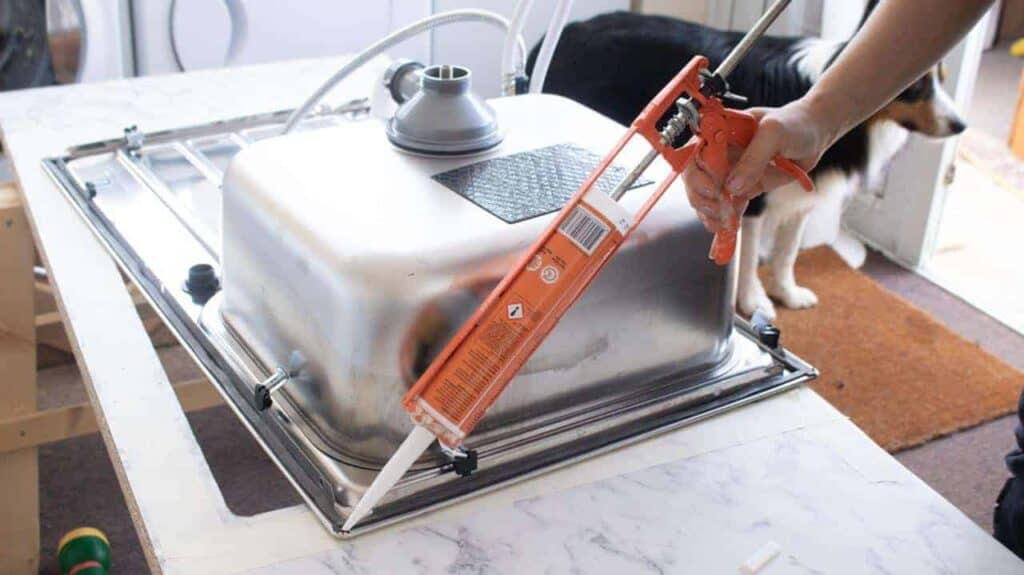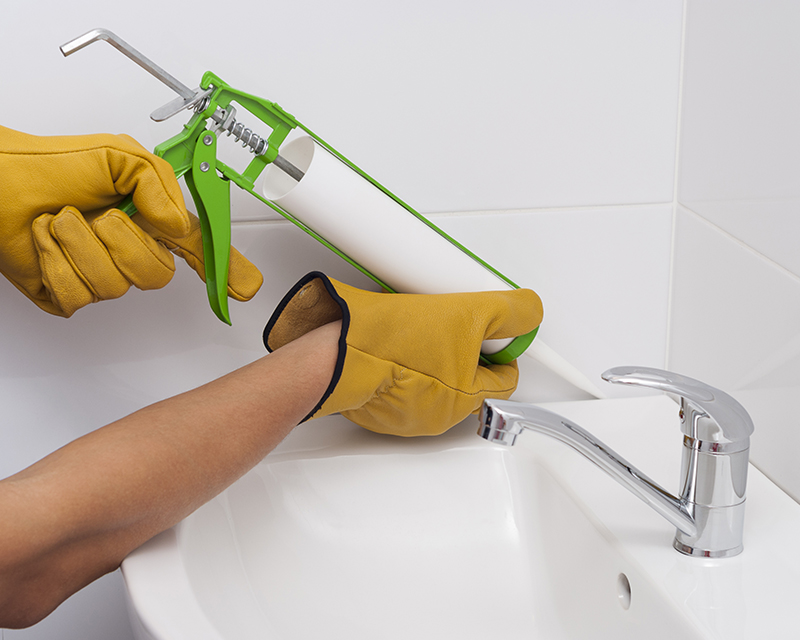How to Seal Around a Kitchen Sink
Properly sealing your kitchen sink is an essential step in maintaining a clean and functional kitchen. Over time, water can seep into the gaps between your sink and the countertop, causing damage and creating an ideal environment for mold and bacteria to grow. By learning how to seal around your kitchen sink, you can prevent these issues and keep your kitchen looking and functioning its best.
How to Seal a Kitchen Sink Drain
In addition to sealing the edges of your kitchen sink, it is also important to properly seal the drain. This will prevent water from leaking into the cabinet below and causing damage. To seal the drain, you will need to remove the drain flange and apply a bead of silicone caulk around the edges before replacing the flange.
Why You Should Seal Around Your Kitchen Sink
Sealing around your kitchen sink is not just about aesthetics. It also serves to protect your kitchen from water damage and the growth of mold and bacteria. Without a proper seal, water can seep into the gaps between your sink and countertop, causing damage to both. It also creates a moist environment that is perfect for mold and bacteria to thrive, posing a health risk to you and your family.
Step-by-Step Guide to Sealing a Kitchen Sink
Sealing your kitchen sink may seem like a daunting task, but with the right tools and techniques, it can be a simple and straightforward process. Here is a step-by-step guide to sealing your kitchen sink:
Step 1: Clean the area around the sink thoroughly with a mild cleaner and allow it to dry completely.
Step 2: Apply a bead of silicone caulk along the edge of the sink where it meets the countertop. Use a caulk gun for a precise and even application.
Step 3: Use a damp finger or a caulk smoothing tool to smooth out the caulk and create a tight seal between the sink and countertop.
Step 4: Wipe away any excess caulk with a damp cloth.
Step 5: Allow the caulk to dry for at least 24 hours before using the sink.
Best Products for Sealing a Kitchen Sink
When it comes to sealing your kitchen sink, it is important to use the right products for the best results. Here are some of the best products for sealing a kitchen sink:
Silicone caulk - This is the most commonly used product for sealing kitchen sinks. It is waterproof and flexible, making it perfect for use in areas that are exposed to water.
Caulk gun - A caulk gun is a must-have tool for applying silicone caulk evenly and precisely.
Caulk smoothing tool - This tool helps to create a smooth and even seal between the sink and countertop.
Common Mistakes When Sealing a Kitchen Sink
While sealing a kitchen sink may seem like a simple task, there are some common mistakes that can lead to improper sealing and potential issues down the road. Here are some mistakes to avoid when sealing your kitchen sink:
Not cleaning the area properly: Before applying caulk, it is crucial to thoroughly clean the area to ensure a tight seal.
Not allowing the caulk to dry completely: It is important to allow the caulk to dry for at least 24 hours before using the sink to ensure the seal is fully formed.
Using the wrong type of caulk: Make sure to use silicone caulk specifically designed for use in bathrooms and kitchens.
How Often Should You Seal Around Your Kitchen Sink?
It is recommended to seal around your kitchen sink every 1-2 years to maintain a tight seal and prevent water damage. However, if you notice any signs of water damage or mold growth, it is important to reseal the sink immediately.
Benefits of Sealing Around Your Kitchen Sink
Sealing around your kitchen sink offers numerous benefits, including:
Preventing water damage: A proper seal will prevent water from seeping into the gaps between the sink and countertop, protecting your kitchen from potential damage.
Keeping your kitchen clean: A tight seal will prevent food particles and other debris from getting stuck in the gaps, making it easier to keep your kitchen clean.
Preventing mold and bacteria growth: A moist and dark environment created by water leakage can lead to the growth of mold and bacteria, which can pose a health risk to you and your family.
How to Tell if Your Kitchen Sink Needs to be Resealed
There are a few signs that may indicate that your kitchen sink needs to be resealed:
Water damage: If you notice any water damage around your sink or countertop, it is a sign that the seal has been compromised and needs to be redone.
Mold or mildew growth: Mold and mildew can thrive in moist and dark environments, so if you notice any growth around your sink, it is a sign that the seal needs to be redone.
Difficulty cleaning the area: If you find it difficult to clean around the edges of your sink, it may be a sign that the seal has deteriorated and needs to be replaced.
Tips for Maintaining a Properly Sealed Kitchen Sink
To ensure that your kitchen sink stays properly sealed, here are some tips to keep in mind:
Regularly clean the area: Keeping the area around your sink clean will prevent debris from getting stuck in the gaps and compromising the seal.
Be mindful of water exposure: Avoid leaving standing water around the edges of your sink, as this can cause the seal to deteriorate over time.
Address any issues immediately: If you notice any signs of water damage or mold growth, reseal the sink as soon as possible to prevent further damage.
In conclusion, sealing around your kitchen sink is an important step in maintaining a clean and functional kitchen. By following these tips and using the right products and techniques, you can ensure that your sink remains properly sealed and free from potential issues. Remember to check the seal regularly and reseal as needed to protect your kitchen and your health.
Why You Should Consider Sealing Around Your Kitchen Sink

Ensuring a Tight Seal
 When designing your kitchen, it’s important to pay attention to the details. One often overlooked detail is the seal around your kitchen sink. While it may seem like a small and insignificant element, a well-sealed sink can make a big difference in the overall look and functionality of your kitchen.
Sealing around your kitchen sink not only adds a professional touch to your kitchen design, but it also serves a practical purpose.
When designing your kitchen, it’s important to pay attention to the details. One often overlooked detail is the seal around your kitchen sink. While it may seem like a small and insignificant element, a well-sealed sink can make a big difference in the overall look and functionality of your kitchen.
Sealing around your kitchen sink not only adds a professional touch to your kitchen design, but it also serves a practical purpose.
Preventing Water Damage
 One of the main reasons to seal around your kitchen sink is to prevent water damage.
Water can easily seep through any small gaps or cracks around your sink and cause damage to your cabinets, countertops, and even the flooring.
This can lead to costly repairs and replacements down the line. By sealing around your sink, you can prevent water from getting into these areas and keep your kitchen looking and functioning at its best.
One of the main reasons to seal around your kitchen sink is to prevent water damage.
Water can easily seep through any small gaps or cracks around your sink and cause damage to your cabinets, countertops, and even the flooring.
This can lead to costly repairs and replacements down the line. By sealing around your sink, you can prevent water from getting into these areas and keep your kitchen looking and functioning at its best.
Keeping Your Kitchen Clean
 A tight seal around your kitchen sink also helps to keep your kitchen clean and hygienic.
Without proper sealing, food particles and liquids can easily get trapped in the gaps and crevices, leading to a buildup of bacteria and mold.
This not only creates an unsanitary environment but can also cause unpleasant odors. By sealing around your sink, you can prevent this buildup and maintain a clean and healthy kitchen.
A tight seal around your kitchen sink also helps to keep your kitchen clean and hygienic.
Without proper sealing, food particles and liquids can easily get trapped in the gaps and crevices, leading to a buildup of bacteria and mold.
This not only creates an unsanitary environment but can also cause unpleasant odors. By sealing around your sink, you can prevent this buildup and maintain a clean and healthy kitchen.
Enhancing the Aesthetics
 In addition to practical benefits, sealing around your kitchen sink can also enhance the aesthetics of your kitchen design.
A well-sealed sink gives a clean and seamless look, creating a more polished and professional appearance.
It also helps to prevent any unsightly gaps or cracks that may take away from the overall design of your kitchen. With a proper seal, your sink can blend seamlessly with your countertops and add to the overall beauty of your kitchen.
In addition to practical benefits, sealing around your kitchen sink can also enhance the aesthetics of your kitchen design.
A well-sealed sink gives a clean and seamless look, creating a more polished and professional appearance.
It also helps to prevent any unsightly gaps or cracks that may take away from the overall design of your kitchen. With a proper seal, your sink can blend seamlessly with your countertops and add to the overall beauty of your kitchen.
The Importance of Proper Sealing
 Proper sealing around your kitchen sink is essential for both practical and aesthetic reasons.
It not only prevents water damage and keeps your kitchen clean, but it also adds a professional and polished touch to your kitchen design.
So, when considering whether or not to seal around your kitchen sink, the answer is clear – it’s definitely worth it. Don’t overlook this small detail in your kitchen design and make sure to give it the attention it deserves. Your kitchen will thank you.
Proper sealing around your kitchen sink is essential for both practical and aesthetic reasons.
It not only prevents water damage and keeps your kitchen clean, but it also adds a professional and polished touch to your kitchen design.
So, when considering whether or not to seal around your kitchen sink, the answer is clear – it’s definitely worth it. Don’t overlook this small detail in your kitchen design and make sure to give it the attention it deserves. Your kitchen will thank you.


























































































